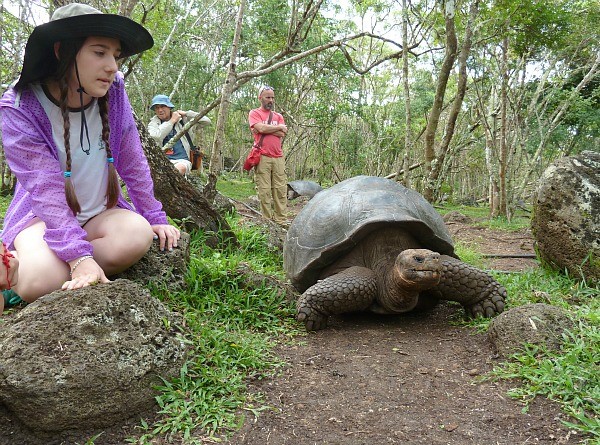
You are here: Home / Destinations / Central/South America / Reptiles of the Galapagos Islands Reptiles of the Galapagos Islands OCTOBER 7, 2015 BY: JENNIFER MINER16 COMMENTS Reptiles of the Galapagos Islands are of wildly varying renown, mostly because the Galapagos Giant Tortoise is so famous. Remember all the media chatter when Lonesome George died? Meanwhile, the poor little gecko gets practically no airplay. There are plenty of species and subspecies of reptiles of the Galapagos islands, because the climate (usually hot and dry) is perfectly suited for them. As we hopefully know, reptiles are cold-blooded and rely on the sun to warm them up. Reptiles of the Galapagos are no different; what does make them different, however, is the number of species that are endemic to the islands. Even the humble little gecko: of the nine gecko species on the Galapagos, six are endemic (meaning, found nowhere else). And poor old Lonesome George, of course, was the last surviving Pinta Island tortoise, a subspecies of the Galapagos Giant Tortoise. Adult Galapagos Giant Tortoise on Santa Cruz Island – Reptiles of the Galapagos Islands (Jennifer Miner) My family and I took an extended Christmas tour of the Galapagos Islands and spent every day snorkeling in the water and hiking around on land. Tour groups are kept small and highly regulated by the Ecuadorian government to ensure that the Galapagos don’t become overrun with tourists; our small ships’ charted path took us to the southern Galapagos islands of Santa Cruz, Isabela, Floreana and Espanola, with San Cristobal being our arrival and departure island. We saw nearly every reptile of the Galapagos islands — I didn’t see any snakes while there — and these were my five favorites. Galapagos Giant Tortoise at Charles Darwin Research Station on Santa Cruz Island (Jennifer Miner) Galapagos Giant Tortoise: is there any reptile more iconic to the Galapagos Islands than the Galapagos Tortoise? (Answer: no.) These reptiles are, as their name indicates, really huge. Their standing height is around 4 feet tall. People used to sit on them, although now we know how truly terrible it is for them — just because their shells are thick and hard doesn’t mean they can withstand the weight of an adult human without health repercussions. The Galapagos Giant Tortoise has the longest lifespan of any vertebrate (that is, any animal species with a backbone) and many live for a century or more. They are currently an endangered species, due to centuries of hunting and more recent problems with invasive, introduced species like cats and dogs that eat their eggs. The Charles Darwin Research Station on Santa Cruz Island in the Galapagos has a well-designed, progressive series of outdoor coops and cages to protect eggs and babies as they grow. This is helping, but currently, there are only around 15,000 Galapagos Giant Tortoises remaining. On my family’s trip to the Galapagos, we stopped on Santa Cruz Island and looked at the tortoise area in the Charles Darwin Research Station. The adult tortoises lumber around, slowly as one would expect, and didn’t seem to consider walking around us as we stood or crouched near them; instead, it was our job to scramble out of the way when they approached. Getting knocked over and trodden upon by a Galapagos Giant tortoise would probably be a memorable experience, but it’s not recommended by the employees of the Charles Darwin Research Station, or by the Ecuadorian government, or, frankly, by anyone.

